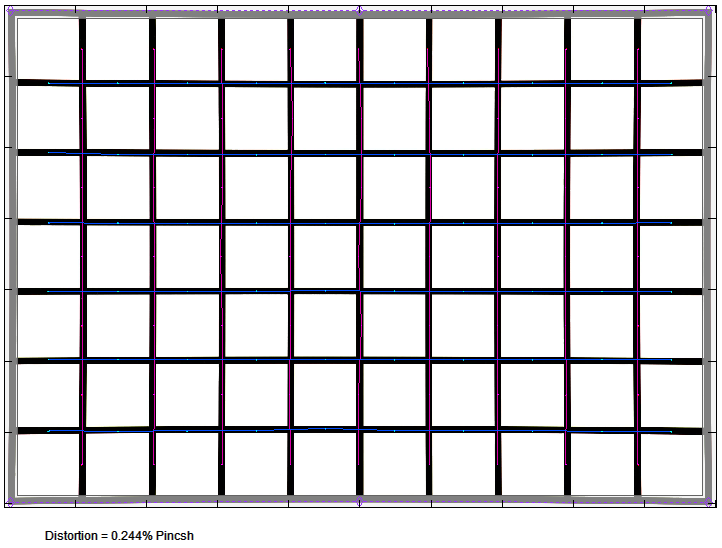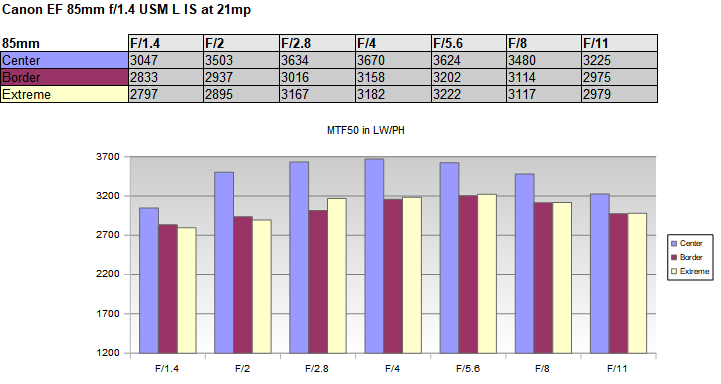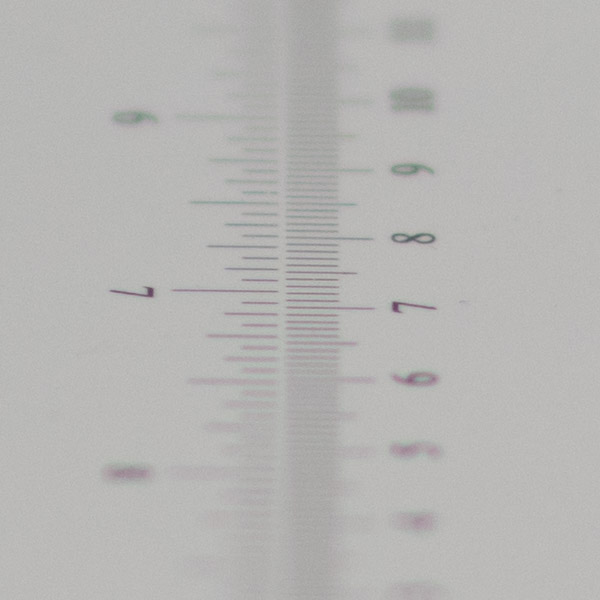|
Canon EF 85mm f/1.4 USM L IS - Review / Test Report - Analysis |
|
Lens Reviews -
Canon EOS (Full Format)
|
|
Page 2 of 3

Distortion
The Canon EF 85mm f/1.4 USM L IS produces a very slight pincushion-type distortion as you can see below.

Vignetting
The vignetting characteristic is typical for such a lens. Thus there’s some substantial light falloff at fully open aperture (1.8EV). Stopping down to f/2 reduces the issue and the vignetting is pretty much gone from f/2.8 onward.

MTF (resolution) on the EOS 5Ds R (at 50 megapixels)
50 megapixels are quite a hammer for most lenses but the Canon EF 85mm f/1.4 USM L IS managed nicely. The center and near-center quality are very good at f/1.4 and the outer image region is at least decent. Stopping down to f/2.8 increases the quality substantially and it's best around the f/4 to f/5.6 mark with a bitingly sharp center and very good borders/corners. Diffraction effects are getting somewhat more obvious from f/11 onward.
The centering quality of the tested lens was good. The field curvature is low.
Please note that the MTF results are not directly comparable across the different systems!
Below is a simplified summary of the formal findings. The chart shows line widths per picture height (LW/PH) which can be taken as a measure for sharpness.
If you want to know more about the MTF50 figures you may check out the corresponding Imatest Explanations

MTF (resolution) on the EOS 5D II (at 21 megapixels)
Many users are still using Canon DSLRs with 20/21mp sensors so let’s have a look here. Given the results at 50mp, it's not surprising that 20/21mp are mostly a piece of cake for this lens. The quality is very good across the frame at f/1.4. Stopping down to f/2 is primarily boosting the center. Truly superb results are possible at f/4-5.6.
Please note that the MTF results are not directly comparable across the different systems!
Below is a simplified summary of the formal findings. The chart shows line widths per picture height (LW/PH) which can be taken as a measure for sharpness.
If you want to know more about the MTF50 figures you may check out the corresponding Imatest Explanations

Chromatic Aberrations (CAs)
Lateral CAs are low across the aperture range. They peak at f/1.4 with an average pixel width of 1.1px at the image borders. From there on they are decreasing towards medium aperture settings.

Bokeh
Sharpness is one thing but you really invest in such a lens for its bokeh capabilities (out-of-focus rendering). The results are - mostly - great again here.
Let's have a look at the quality of out of focus highlights first. In the image center they are nicely rendered with a smooth inner disc and a perfectly circular shape till about f/2.8. This is about as good as it gets on a conventional lens at least.
 That being said, the discs deteriorate quickly. Below is a sample crop which was taken mid field at f/1.4. You can easily spot that the disc has been "cut" there - a vignetting effect that can be reduced by stopping down.
That being said, the discs deteriorate quickly. Below is a sample crop which was taken mid field at f/1.4. You can easily spot that the disc has been "cut" there - a vignetting effect that can be reduced by stopping down.
 The effect is emphasized the further you look into the image corners - see below. Please note that this is not unusual although it's somewhat more pronounced on the Canon lens possibly because the front element of the lens is relatively small. The Sigma 85mm f/1.4 DG HSM ART is showing more pleasing highlights in the image corners and it has a much bigger front element.
The effect is emphasized the further you look into the image corners - see below. Please note that this is not unusual although it's somewhat more pronounced on the Canon lens possibly because the front element of the lens is relatively small. The Sigma 85mm f/1.4 DG HSM ART is showing more pleasing highlights in the image corners and it has a much bigger front element.
 As far as the general blur is concerned, it's smooth in the image foreground (to the right below) and even more silky in the image background (to the left).
As far as the general blur is concerned, it's smooth in the image foreground (to the right below) and even more silky in the image background (to the left).

Bokeh Fringing
In a perfect world scenario, you won’t see any axial CAs thus color fringing on the Z-axis. However, only a handful of fast lenses are correcting the issue effectively and the Canon EF 85mm f/1.4 USM L IS is not among them. When scrolling through the provided sample crops below, you should be able to spot the usual purplish color fringing in front of the focus point and a greenish halo beyond. The fringing is most pronounced at f/1.4 and decreases from there. However, you can still spot traces at f/4.
You should also be able to notice that the focus point does NOT shift when stopping down. Many high-speed lenses have difficulties keeping the focus point spot on - focus-shifts or so-called Residual Spherical Aberrations (RSA).
|
Move the mouse cursor over the f-stop marks below to observe the respective LoCAs
|
| f/1.4 |
f/2 |
f/2.8 |
f/4 |
|

|
|